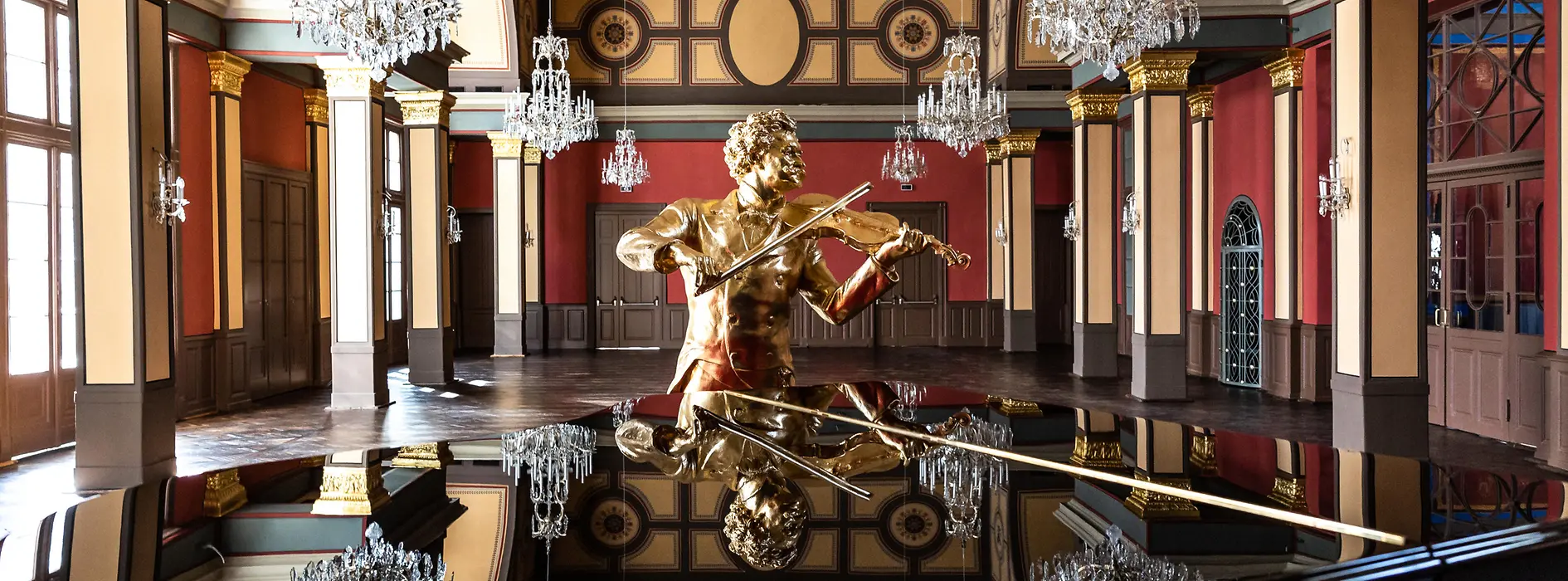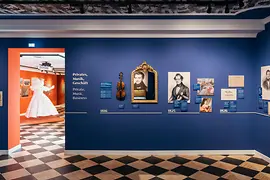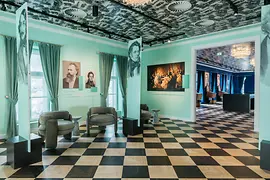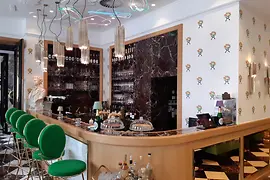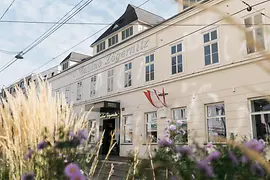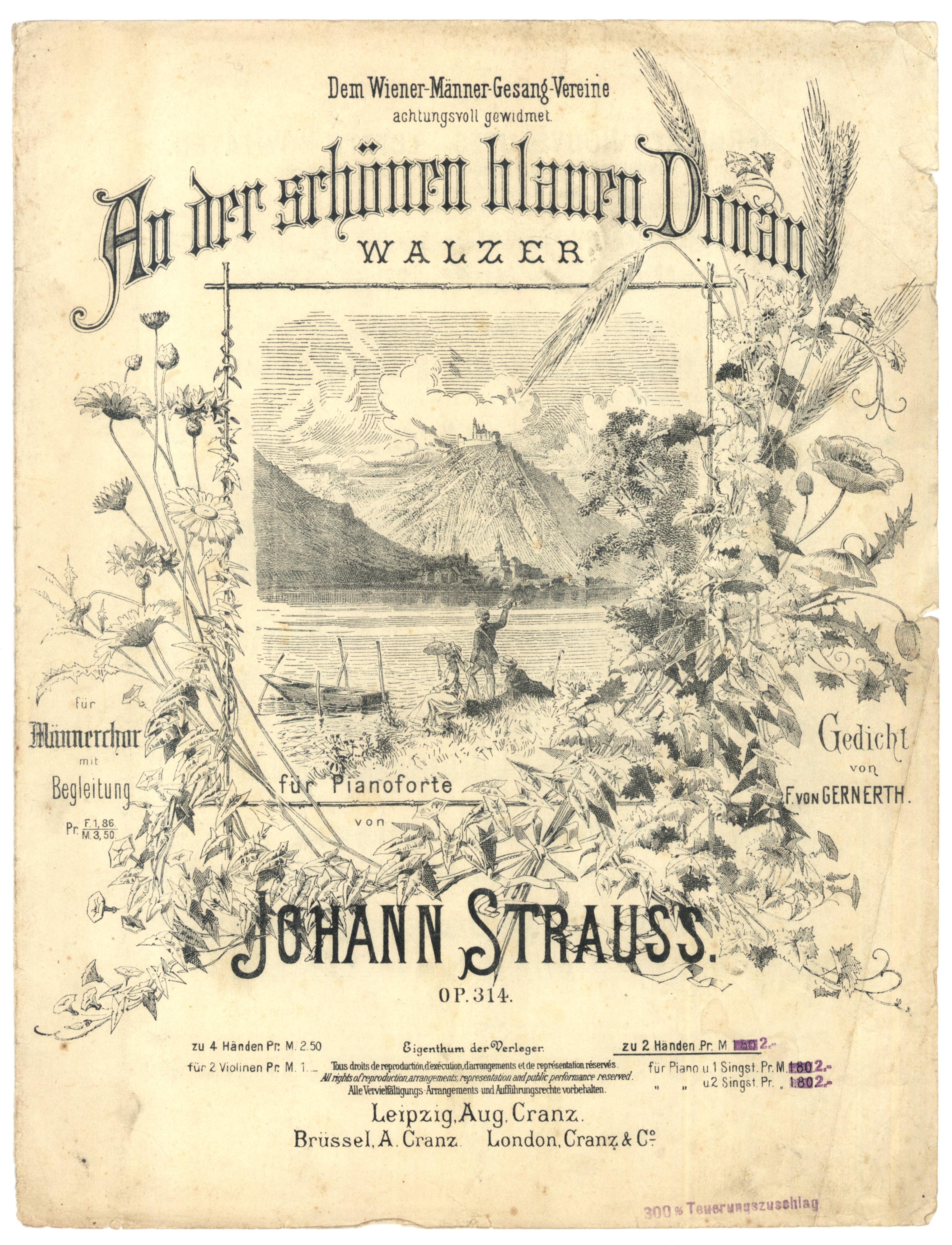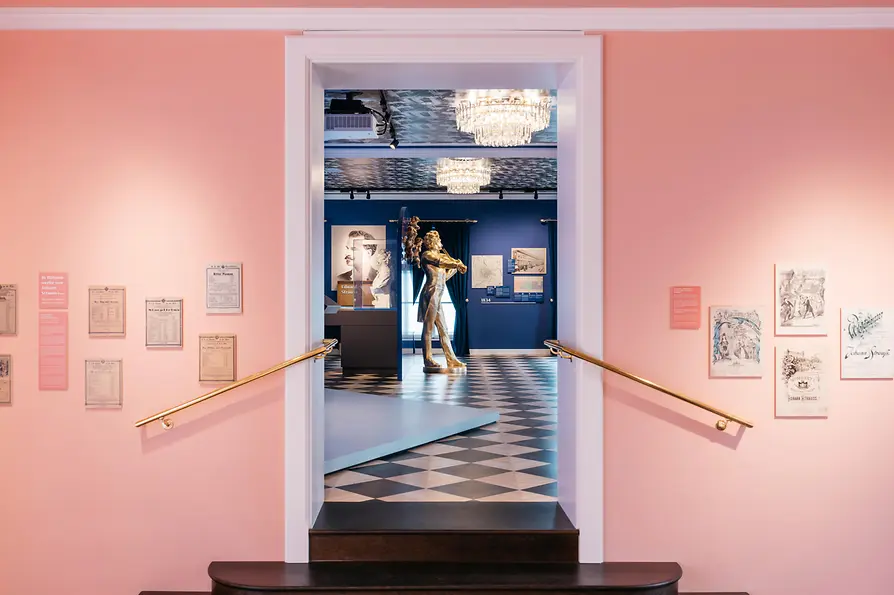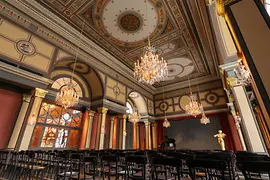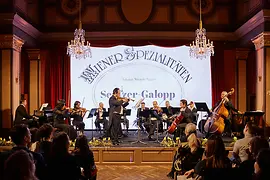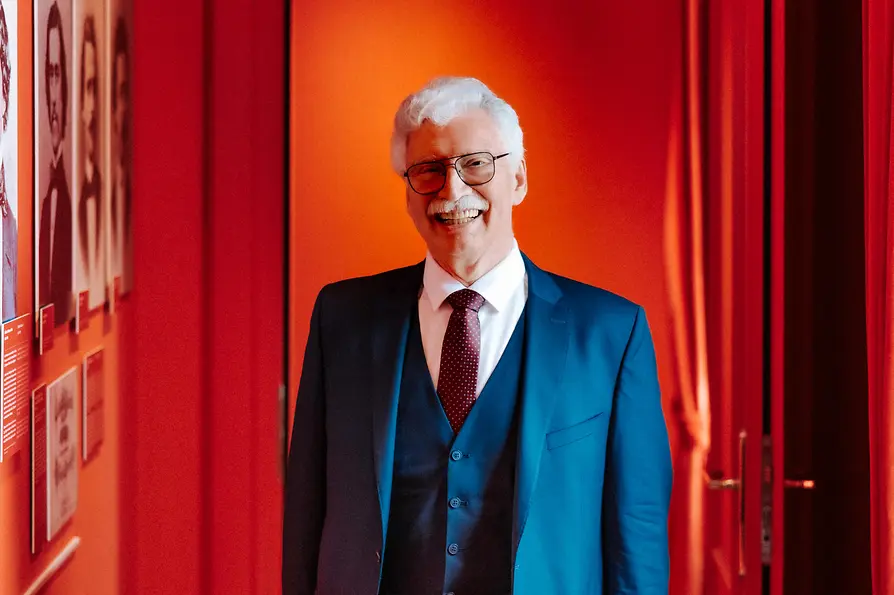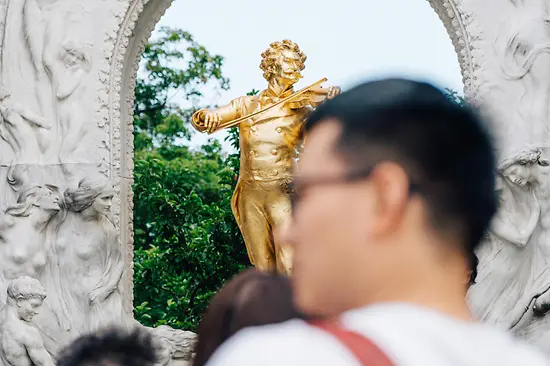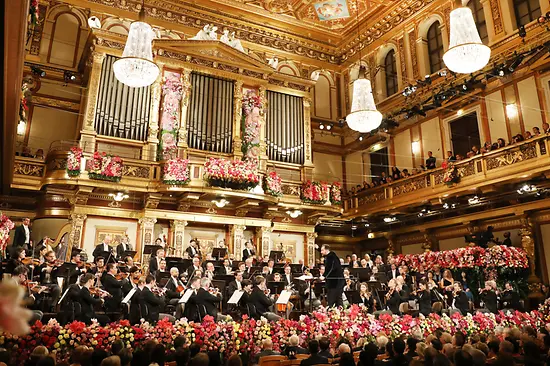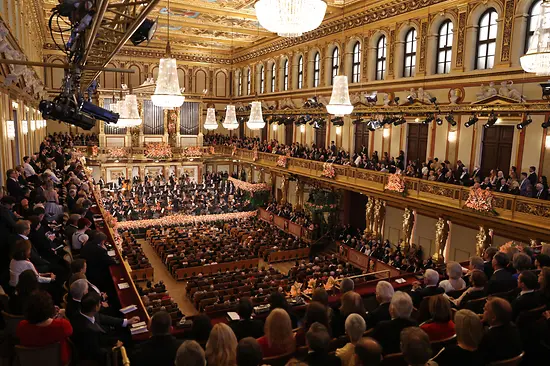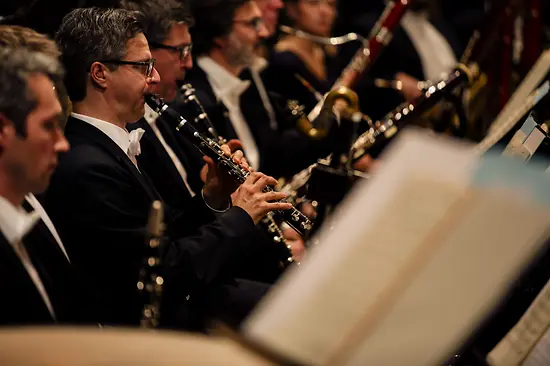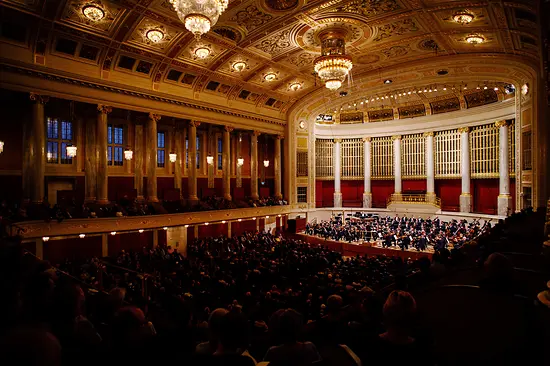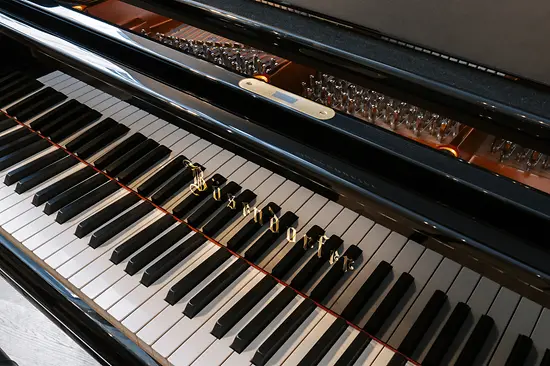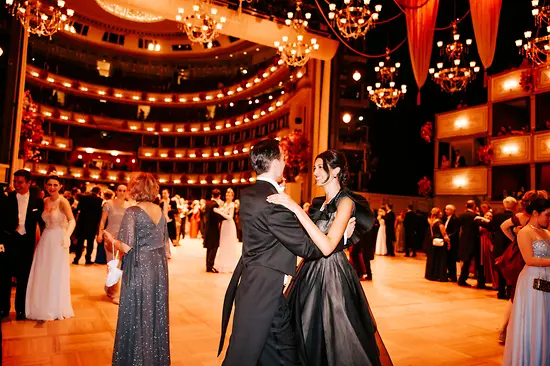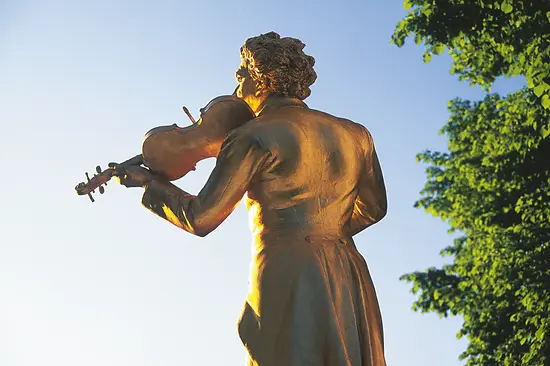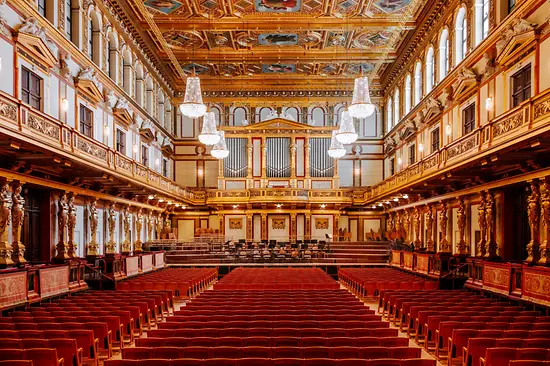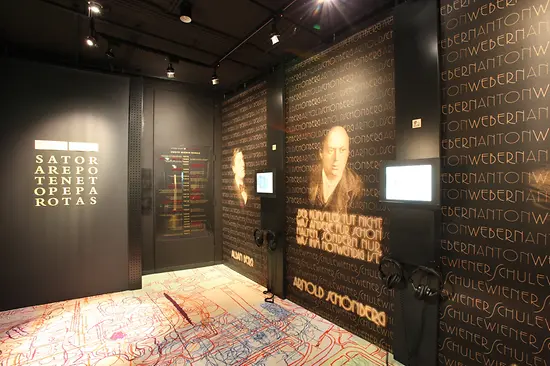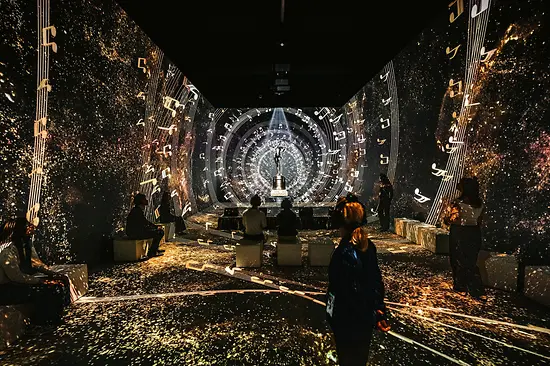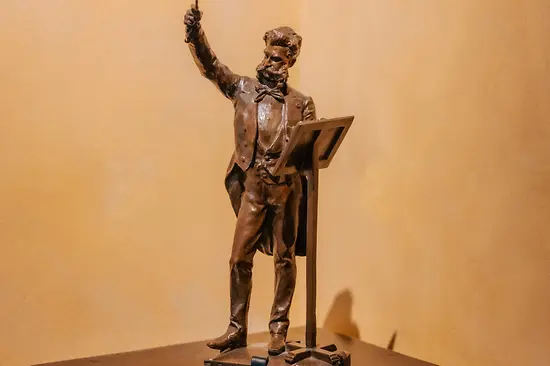House of Strauss
Closely associated with Vienna and a global superstar like Mozart: Johann Strauss (son). The whole world has been turning to his Blue Danube Waltz since 1867 – a permanent feature of every New Year's Concert by the Vienna Philharmonic, which reaches an audience of millions in 90 countries. On October 25, 2023 – the 198th anniversary of Johann Strauss’s birth – the great Viennese Strauss venue House of Strauss opened its doors at Casino Zögernitz. The museum covers his fascinating personality and music in depth at an original venue. Other pilgrimage sites for Strauss fans include the gold Strauss monument in the Stadtpark, the Strauss apartment in Praterstraße and the Strauss tomb at the Central Cemetery.
A unique all-round experience: exhibition, concert, cuisine
The Viennese art of living on a premium level: the House of Strauss unites light classical music in the form of regular concert shows and an interactive exhibition that brings the Strauss dynasty’s heritage to life. It goes without saying that the multimedia and audiovisual technology is state-of-the-art. The cuisine is also of the highest standard – Head Chef Simon Steindl combines at Restaurant Simon, with its beautiful garden, the best of Austria with the lightness of the Mediterranean.
The most popular and most booked experience is Dinner & Concert – after an exquisite 3-course menu at Restaurant Simon, visitors can explore the Strauss Museum at their own pace. After a sparkling wine reception, the “Best of Strauss” concert follows in the legendary Strauss Hall, performed live with impressive acoustics, LED visuals and a light show. Even Johann Strauss the Elder staged his concerts with “illuminations”, that is, with special lighting.
Concert video from the historic Strauss Hall at Casino Zögernitz, featuring a classical orchestra and singer, with film scenes projected on the screen behind them.
Display alternative text
A multisensory experience over 2,000 m²
Upon arriving at the museum, visitors immerse themselves room by room in the world of 19th-century Viennese entertainment culture, with scenes from ballrooms, concert halls and stories from that bygone era. A specially created app in several languages guides visitors through the entire exhibition. The tour is narrated by Thomas Strauss, the great-great-great-great-grandson of Johann Strauss I.
The multimedia backdrop features acoustics and animated visuals, LED walls and sculptures shown via projection areas make it possible to experience the zeitgeist in all senses of the term. Visitors take part interactively: either as performers in an operetta, on the digital music stand or other areas that encourage participation.
One fascinating room on the ground floor, the Octagon, covers the history of the legendary waltz – Strauss’s Blue Danube Waltz is the unofficial anthem of both Vienna and Austria. The Viennese waltz – both the music and dance – is the epitome of Viennese and UNESCO World Heritage.
Interior designer Denis Košutić is responsible for giving the House of Strauss that finishing touch. The internationally acclaimed Atelier Brückner is the highlight of the museum, featuring truly eye-catching projects such as the Grand Museum of Egypt (Gizeh) or the Museum of the Future (Dubai). Furthermore, Atelier Brückner also carried out renovation work on the Austrian Parliament in Vienna.
Concerts in the magnificent Strauss Hall
The special feature of this original Strauss site is its history: opened in 1837 by Johann Strauss Senior, the casino was a popular meeting place for Viennese society. In the summer of 1850, Johann Strauss Junior hosted a folk festival here with a glittering ball event, imposing illuminations and fireworks. Taking his cue from his famous father, he gave the event a suitably showy title and composed the Johannis-Käferln (Fireflies Op. 82) waltz especially for it.
From 1880, his brothers Johann and Eduard Strauss would also give numerous concerts in the casino’s opulent Strauss Hall. In the years that followed, it had a range of uses: as a stage, open-air cinema, and for parties and balls. Thanks to its outstanding acoustics, from 1967 the hall also served as a recording studio for early and classical music, with Nikolaus Harnoncourt and his Concentus Musicus among those to use it for precisely this purpose.
Nowadays, the recently renovated, imposing 350 m² hall with its impressive ceiling frescoes and crystal chandeliers hark back to glamorous balls and concerts. It is the last original concert hall of the Strauss dynasty still in existence worldwide. It also appears in a completely new light: Thanks to state-of-the-art technology, a LED wall means Johann Strauss can present his music virtually on a grand stage. This is accompanied by a film summarizing the history of the Strauss dynasty.
Classics of Austria
Starting in April 2026, Johann Strauss will be the narrator for the new concert experience “Classics of Austria”. In the film, he guides the viewer through the history of music to Mozart, Beethoven, Schubert, Brahms and the Strauss dynasty. The Strauss Hall becomes a living instrument. During The Blue Danube Waltz, for instance, it glows a deep shade of blue. This is paired with fine cuisine.
Strauss Experts
Leading experts worldwide, such as the Vienna Institute for Strauss Research, are now based at the House of Strauss – headed, appropriately, by a scion of the Strauss dynasty: Eduard Strauss (in the picture) is the great-grandnephew of Johann Strauss II (and father of the aforementioned Thomas Strauss, who recorded the audio guide). A lawyer by trade, he is committed to ensuring that his family's history and music receives the careful kitsch-free treatment it deserves.
The House of Strauss is also an academic center: young musicians from all over the world hone their talents to perfection at the Vienna Master Classes – at one of those places that underscore Vienna's reputation as the world capital of music.
Tips for the surrounding area
The House of Strauss is located in Vienna’s upmarket Döbling district, surrounded by nearby vineyards and tucked away from the beaten track. No. 37 trams stop right in front of the building, and it is only 400 meters from the Spittelau subway station (U4). A visit can be combined with the Schlumberger Cellars, just a few minutes’ walk away, or with the Beethoven Museum and a stop off at one of the local wine taverns. An excursion to the Kahlenberg rewards visitors with a panoramic view over Vienna.
Fancy a Strauss walk through Vienna? The city is full of traces of the music star.
- Döblinger Hauptstraße 76, 1190 Wien
- info@houseofstrauss.at
- https://www.houseofstrauss.at
Vienna City Card
Discount valid for purchase on site
Opening times
- Tu - Su, 10:00 - 18:00
- on holidays, 10:00 - 17:00
Accessibility
no steps (Double swinging doors)
2 Parking spaces for people with disabilities
Entfernung unter 50m zum Betrieb
Seeing eye dogs allowed
Wheelchair accessible restroom available.
- Döblinger Hauptstraße 76, 1190 Wien
- restaurant@zoegernitz.com
- https://houseofstrauss.at/restaurant
Opening times
- Tu - Sa, 11:00 - 22:00
